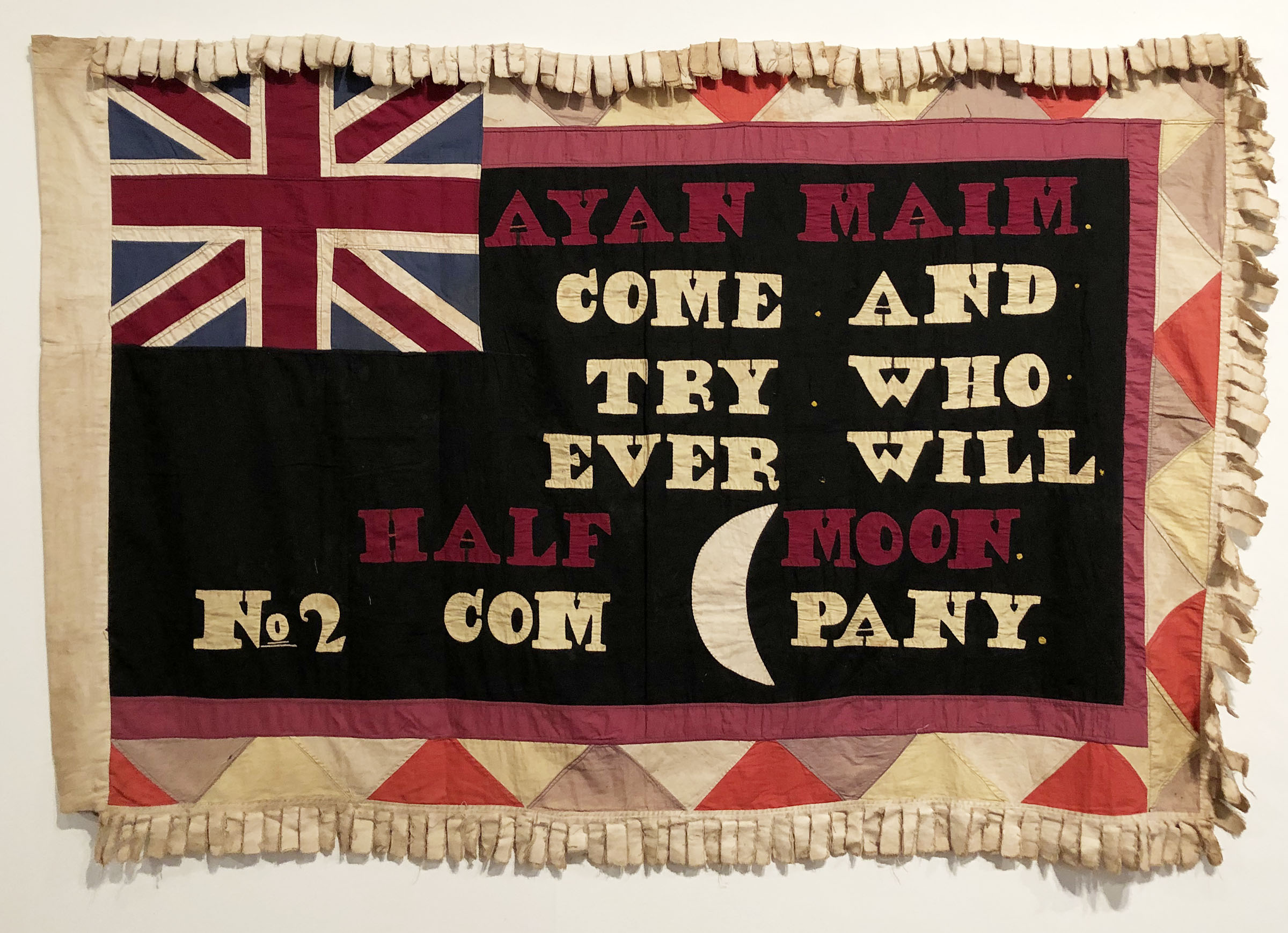The Art of Insult
 |
| Possibly Kweku Kakanu, Saltpond Workshop. Made for No. 2 Company Enyan Maim, about 1945 |
Asafo flags herald the paramilitary societies of southern Ghana. These societies often defended the common people against European colonizers and post-independence kleptocrats. The flags however target rival societies via insult comedy rebuses. The example above uses the catchphrase come and try whoever will (roughly, you and what army?) to boast of the might of the No. 2 Company Enyan Maim. The Union Jack at upper left, a flag-within-the-flag, was emblematic of the powers that be. It continued to appear on Asafo flags long after independence, though Ghana's flag became increasingly popular.
The Fowler Museum's collection of Asafo flags, many assembled by curator Doran Ross, are the basis of "Art, Honor, and Ridicule: Fanta Asafo Flags from Southern Ghana" (through Feb. 12, 2023).
 |
| No. 3 Company Abandze, about 1900. Fowler Museum, UCLA |
This flag, one of the earliest in the show, demonstrates the cross-cultural nature of the medium. Lions are not native to coastal Ghana. The creature is based on the rampant lions of European heraldry, particularly the arms of the States-General of the Netherlands. The Dutch left Ghana in 1872, but their influence on visual culture lingered.
 |
| Kweku Akyeampong, Made for Nkum No. 2 Company Kormantse, about 1940 |
 |
| John Freeman Acquah, Anomabo workshop. Kyirem No. 6 Company Anomabo, before 1928 |
 |
| Long banner, Nana McCarty. Kyirem No. 6 Company Anomabo, 1952. Fowler Museum, UCLA |
After WWII some societies began commissioning extremely long banners, 300 ft or so. A 1952 "Long Banner" (nsusuansu) commissioned by the Kyirem No. 6 company Anomabo is featured. The company's archrival, No. 5, complained the dark red background was their intellectual property—No. 6's color was "bright red." In 1970 a court ruled in favor of No. 5 and ordered No. 6 to stop using its long banner.
No. 5 celebrated the legal victory by commissioning a similar long banner from Kwamina Amoaku. In order to pay for it, No. 5 sold ten flags to the Fowler Museum.


Comments